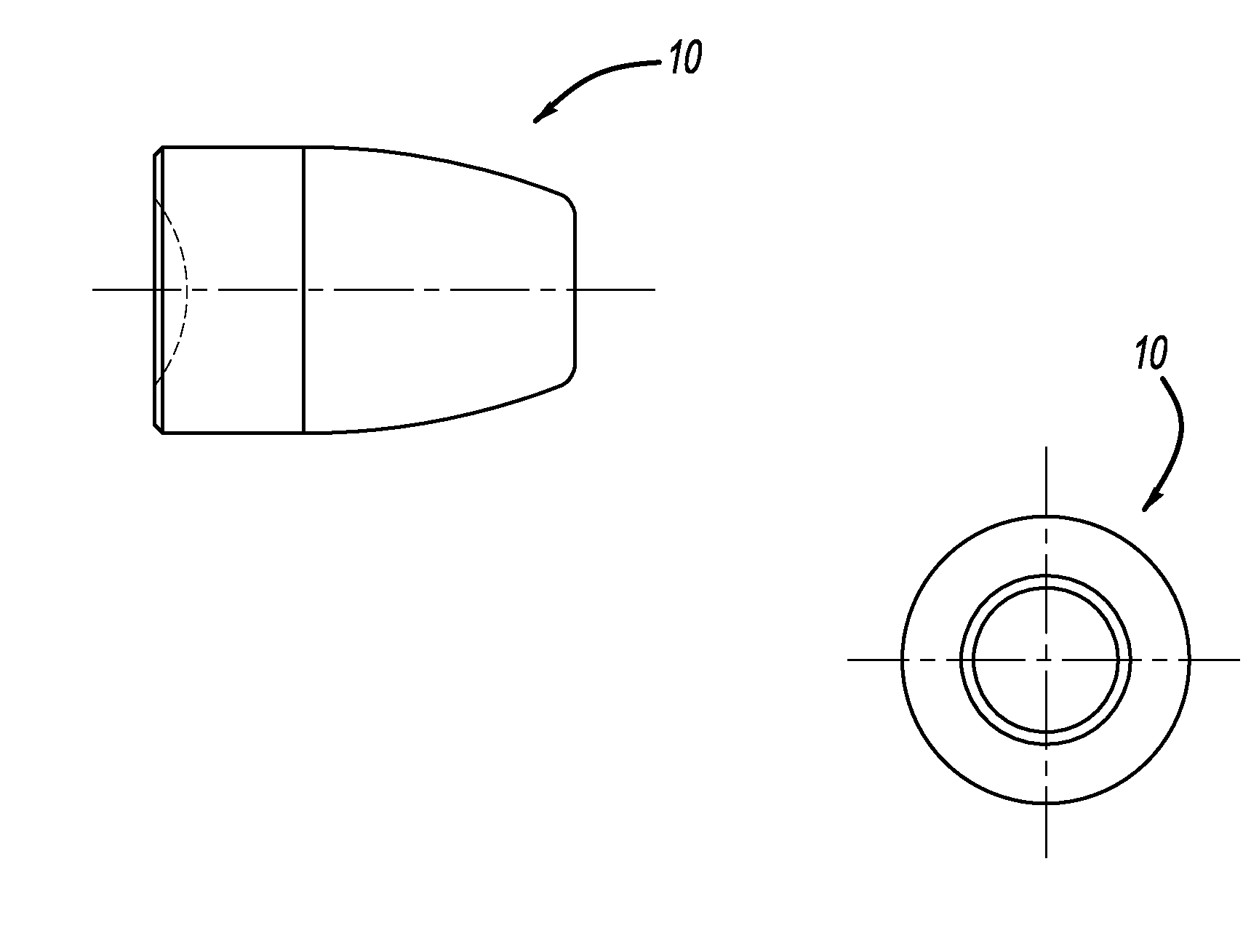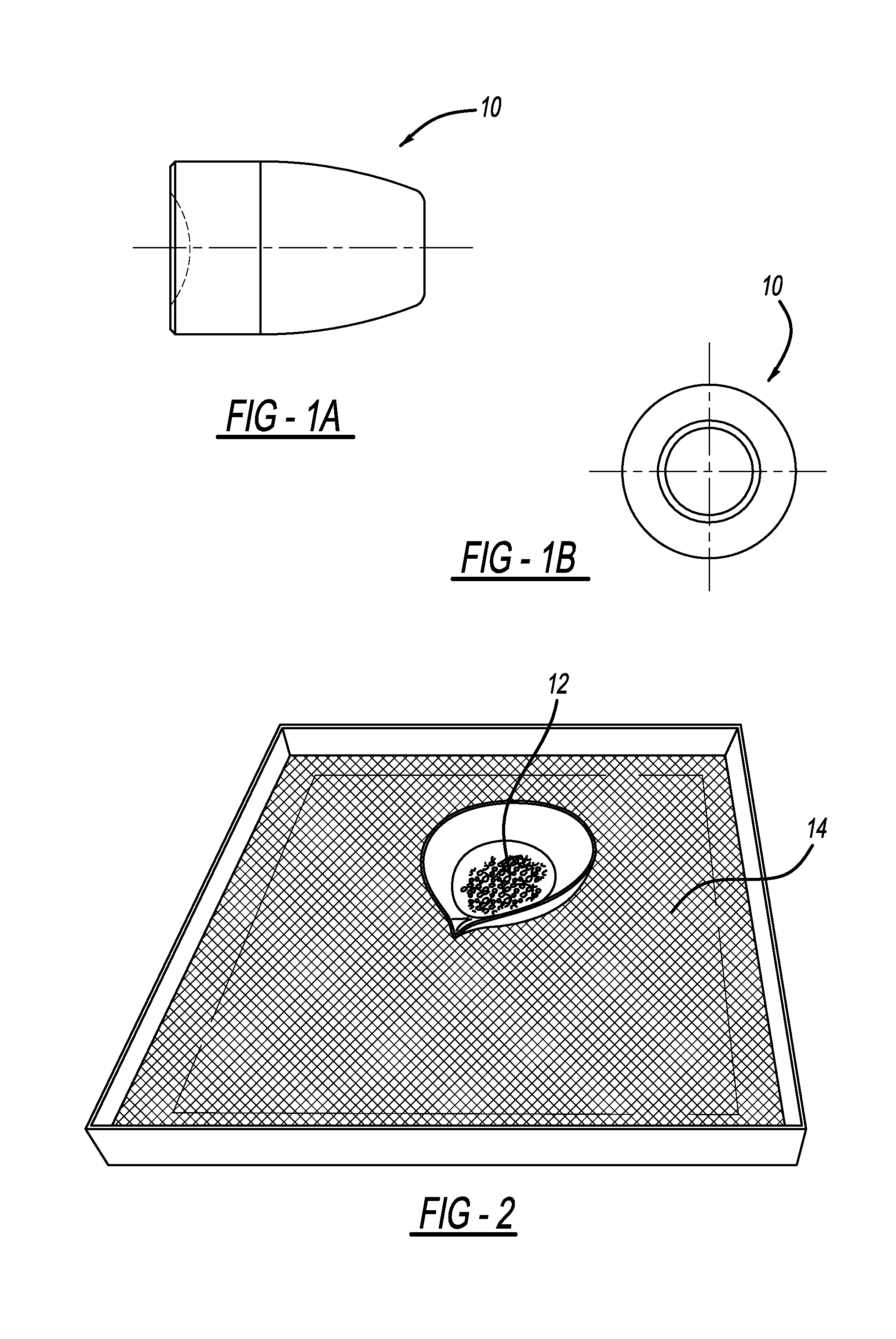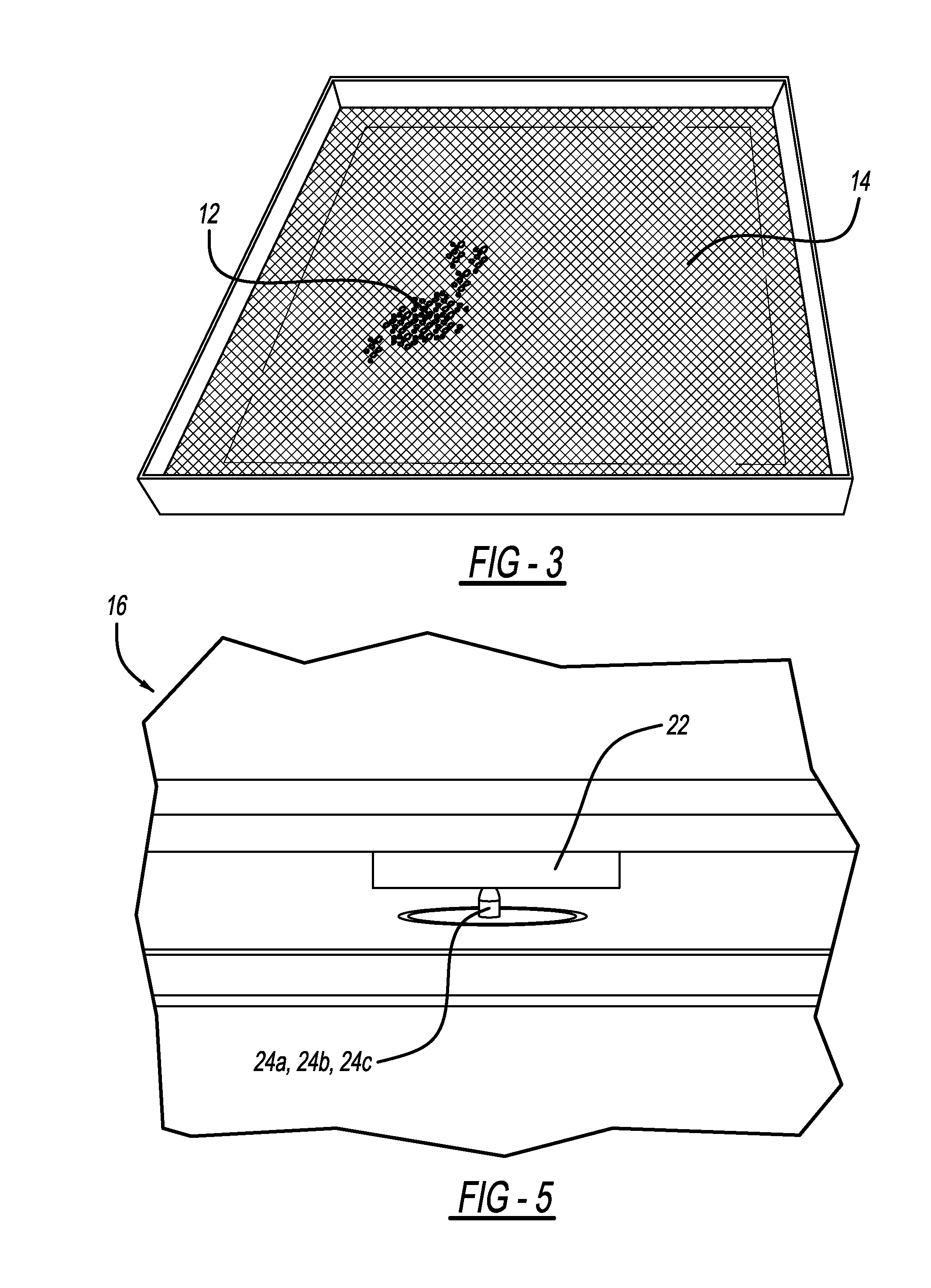Lead free frangible iron bullets
- Summary
- Abstract
- Description
- Claims
- Application Information
AI Technical Summary
Benefits of technology
Problems solved by technology
Method used
Image
Examples
example 1
[0030]One grade of iron powder produced by Hoeganaes Corporation was blended with die lubricant, assigned these numbers:
[0031]1) 96.35% iron with 2.90% FE 3 P 16% and 0.75% zinc stearate (lubricant)
[0032]2) The base iron material is trademarked under Hoeganaes Corporations name Anchorsteel 1000C
[0033]About a 90 grain sample of the powder blend was pressed (molded) in a die to make the 9 mm projectiles. Projectile size was approximately 9 mm (0.354 inches) diameter×13.5 mm (0.53 inches) long. The bullets were sintered in a belt furnace in a 100% nitrogen atmosphere. Density of bullets was determined using the water immersion technique. Bullets were then resin impregnated and coated with zinc phosphate per MIL-DTL-16232G Class Z Type 2. Other normal plating processes can be used at this point to alter the appearance / color of the bullet. This is followed with a coating or plating using either copper in accordance with ASTM B734-97 Class 5 or coated with manganese phosphate or zinc phos...
example 2
[0046]Additional test firing of bullets made to the same material composition and loading techniques as pre example 1 were conducted. Except in this case the projectiles were copper plated instead of the zinc phosphate coating.
[0047]a) A single test round with the copper plating fragmented as follows:
[0048]Total weight prior to screening=5.54 grams
[0049]Screen powder (or small particles) passing through the 14 mesh screen=1.64 grams (30%)
[0050]Fragments not passing through the 14 mesh screen=3.90 grams (70%)
[0051]The largest fragment size was approximately 0.19×0.18×0.16 inches and weighed no more than 0.55 grams (10%).
example 3
[0052]Additional test firing of bullets made to the same material composition and loading techniques as per example 1 were conducted. Except in this case the projectiles were molded to a longer length of 15 mm (0.59 inches) and were a slightly higher in weight as noted below. Additionally the parts were plated using a standard zinc plating process to 0.0025 inch plating thickness.
[0053]a) A single test round with the zinc plating fragmented as follows:
[0054]Total weight prior to screening=5.67 grams
[0055]Screened powder (or small particles) passing through the 14 mesh screen=4.18 grams (74%)
[0056]Fragments not passing through the 14 mesh screen=1.48 grams (26%)
[0057]The largest fragment size was approximately 0.25×0.20×0.18 inches and weighed no more than 0.28 grams (5%).
[0058]b) A second test of the bullets from example 3 was completed using 10 rounds and the combined weights were recorded.
[0059]Total 10 round weight prior to screening=51.95 grams
[0060]Screened powder (or small par...
PUM
 Login to View More
Login to View More Abstract
Description
Claims
Application Information
 Login to View More
Login to View More - R&D
- Intellectual Property
- Life Sciences
- Materials
- Tech Scout
- Unparalleled Data Quality
- Higher Quality Content
- 60% Fewer Hallucinations
Browse by: Latest US Patents, China's latest patents, Technical Efficacy Thesaurus, Application Domain, Technology Topic, Popular Technical Reports.
© 2025 PatSnap. All rights reserved.Legal|Privacy policy|Modern Slavery Act Transparency Statement|Sitemap|About US| Contact US: help@patsnap.com



